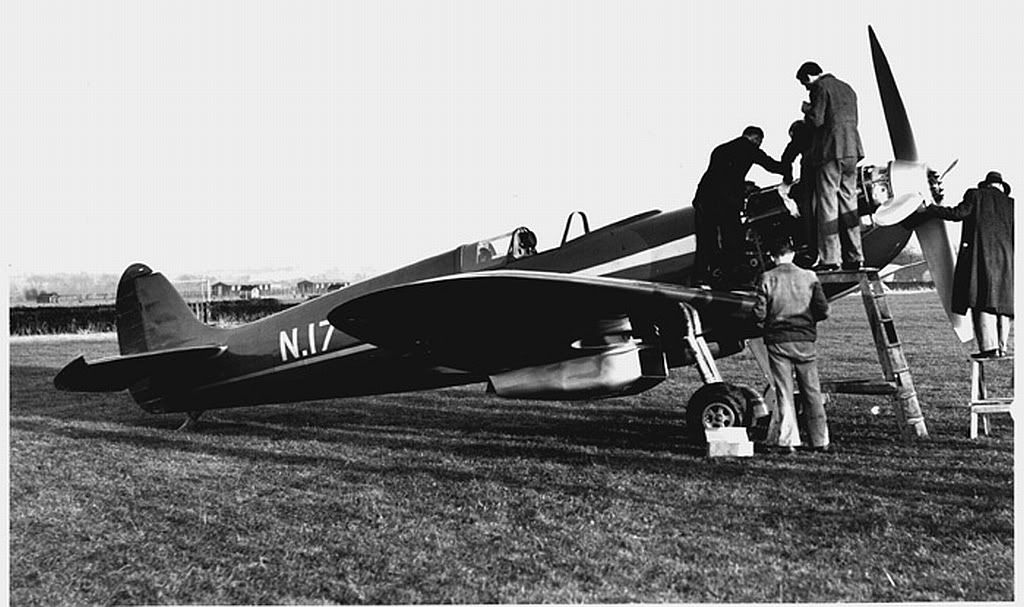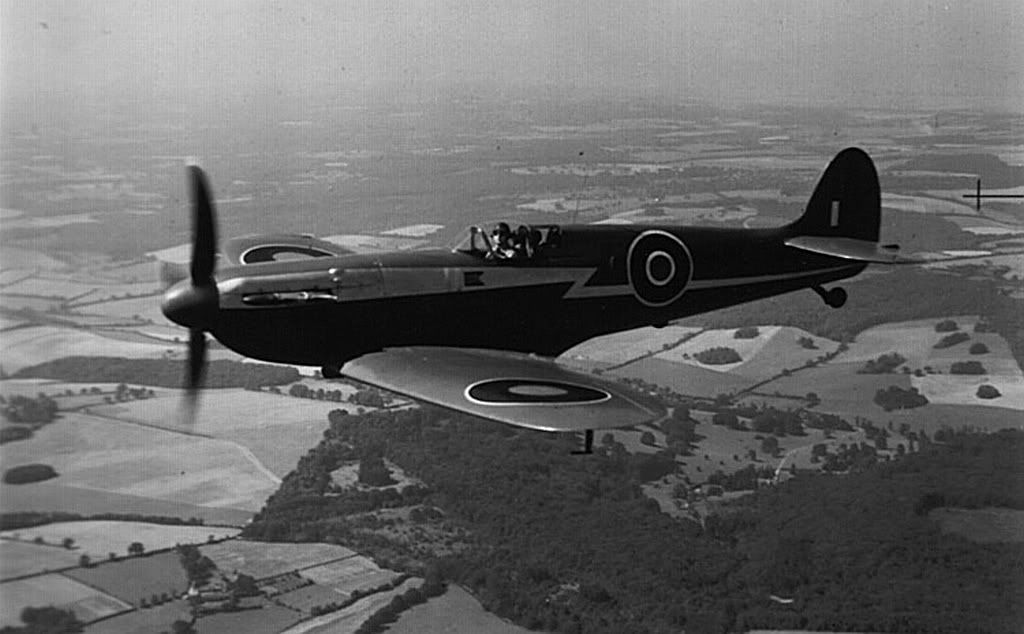Forums
- Forums
- Duggy's Reference Hangar
- RAF Library
- The Speed Spitfire
The Speed Spitfire
Post a reply
- Go to Previous topic
- Go to Next topic
- Go to Welcome
- Go to Introduce Yourself
- Go to General Discussion
- Go to Screenshots, Images and Videos
- Go to Off topic
- Go to Works in Progress
- Go to Skinning Tips / Tutorials
- Go to Skin Requests
- Go to IJAAF Library
- Go to Luftwaffe Library
- Go to RAF Library
- Go to USAAF / USN Library
- Go to Misc Library
- Go to The Ops Room
- Go to Made in Germany
- Go to Campaigns and Missions
- Go to Works in Progress
- Go to Juri's Air-Raid Shelter
- Go to Campaigns and Missions
- Go to Works in Progress
- Go to Skinpacks
- Go to External Projects Discussion
- Go to Books & Resources
-
13 years ago
 Main AdminWhen the prototype of the spitfire first flew in 1936, the British press saw in it the "fastest fighter in the world". The fastest fighter, maybe, but not the fastest aircraft because, at the same moment, the Macchi-Castoldi MC 72 was the world top speed record holder with a mark of 709 km/h (440,7 mph). Despite the fact that the record was well above the potential of Sir Reginald Mitchell's plane, both the British Air Ministry and Supermarine decided to push the new Spitfire design to it's limits by modifying the 48th airframe (serial K9834) to become the type 323 or, more familiarly, the "Speed Spitfire". The challenge was not to beat the Macchi-Castoldi (which was a seaplane), but the Hughes H-1 which was the fastest land-plane aircraft with a a top-speed of 566 km/h (352 mph). This record was at that time within the potential of the British prototype.
Main AdminWhen the prototype of the spitfire first flew in 1936, the British press saw in it the "fastest fighter in the world". The fastest fighter, maybe, but not the fastest aircraft because, at the same moment, the Macchi-Castoldi MC 72 was the world top speed record holder with a mark of 709 km/h (440,7 mph). Despite the fact that the record was well above the potential of Sir Reginald Mitchell's plane, both the British Air Ministry and Supermarine decided to push the new Spitfire design to it's limits by modifying the 48th airframe (serial K9834) to become the type 323 or, more familiarly, the "Speed Spitfire". The challenge was not to beat the Macchi-Castoldi (which was a seaplane), but the Hughes H-1 which was the fastest land-plane aircraft with a a top-speed of 566 km/h (352 mph). This record was at that time within the potential of the British prototype.
In summer 1937, the Rolls-Royce engineers began to work on a new "Merlin II" powerplant which was able to produce 1536 hp. This was almost one third more than the initial engine. The K9834 airframe was fitted with this new motor but this was not the only modification. The military equipment was deleted, the numerous access panels were removed and the surface of the plane was smoothed with the use of flush rivets. To reduce drag, the wing tips were rounded and the total wingspan was reduced to 10,26 m. A new high pitch four blade wooden propeller was designed with a smaller diameter to reduce the circumferential speed and eliminate the supersonic flow around the blades. The windshield and the canopy were streamlined and finally, the tailwheel was replaced by a fixed tail skid. The modified plane weighed 2470 kg, 135 kg more than the standard version!
In November 1937, Rolls Royce hoped to obtain 1995 hp out of the special version of the Merlin, which would have been enough power for the Speed Spitfire to reach 603 km/h (375 mph) at low altitude. But at the same time, the Messerschmitt Bf 109 V13 was already able to fly 608 km/h (378 mph)! From now on, the type 323 had to reach 616 km/h (383 mph), 1% more than the german plane, for the record to be approved. With further modifications and even more power (2122 hp) the engineers still hoped they could break the record. The first flight of the Speed Spitfire took place in November 11th with Mutt Summers as test pilot. After that, all the panel lines of the aircraft were filled (except around the engine), the surface was painted in Royal Blue and Silver color and finally everything was polished.
In February 1939, Harry "Bruin" Purvis managed to reach 656 km/h (407 mph) with the Speed Spitfire at the altitude of 990 m. At ground level the speed would have been slower, but still enough to beat the Germans. However, the British knew that Heinkel was about to enter the competition so it was imperative to gain a few km/h (mph) more. It was decided to delete the big radiator under the right wing to improve aerodynamics. With this modification, a top speed of 684 km/h (425 mp/h) at low level was anticipated. To replace the external radiator, a new internal cooling system was designed which allowed the plane to fly the few minutes necessary to break the record. Work on the new cooling system only began when suddenly any effort was made useless: the Heinkel He 100 set the absolute World Speed Record to 753 km/h (468 mph) and less than a month after, the Messerschmitt 209 flew even faster! So fast that the record of 755 km/h (469 mph) was only broken on August 16, 1969 by a highly modified 3100 hp F8F-2 Bearcat, at an average speed of 483.041 mph!
Of course this meant the end of the Speed Spitfire project. The plane was crated and later used as a static demonstration plane for the "Salon a?ronautique" of Bruxelles in summer 1939. This could have been the end of the Speed Spitfire but in 1940, the RAF desperately needed combat planes. The type 323 was summarily reequiped and fitted with a Merlin XII engine and a three blade propeller with variable pitch. However, the modifications didn't allowed any armament to be fitted inside the wings and the fuel capacity was also much lower than on a standard Spitfire. The only squadron that could have made good use of this hybrid plane was the Photographic Reconnaissance Unit (PRU) based at Heston. The Speed Spitfire, with it's smooth finish, still was one of the fastest aircraft in the world and Wing Commander Geoffrey Tuttle expected to be able to safely fly reconnaissance missions over France with it. Alas, he soon realized that he would have ran out of fuel 35 km before reaching the British coast on it's return flight!
The Speed Spitfire finished it's career as a liaison aircraft and became the personnal plane of the Commander of the 106 Photo Reconnaissance Wing, Air Commodore John Boothmann. Some said he flew over Normandy on June 6th 1944 to shoot pictures of the D-Day beaches, but this could well be a legend. Finally, K9834, the 48th Spitfire ever made, was scrapped in June 1946... without to have beaten only one record.


Regards Duggy.
Post a reply
- Go to Previous topic
- Go to Next topic
- Go to Welcome
- Go to Introduce Yourself
- Go to General Discussion
- Go to Screenshots, Images and Videos
- Go to Off topic
- Go to Works in Progress
- Go to Skinning Tips / Tutorials
- Go to Skin Requests
- Go to IJAAF Library
- Go to Luftwaffe Library
- Go to RAF Library
- Go to USAAF / USN Library
- Go to Misc Library
- Go to The Ops Room
- Go to Made in Germany
- Go to Campaigns and Missions
- Go to Works in Progress
- Go to Juri's Air-Raid Shelter
- Go to Campaigns and Missions
- Go to Works in Progress
- Go to Skinpacks
- Go to External Projects Discussion
- Go to Books & Resources
